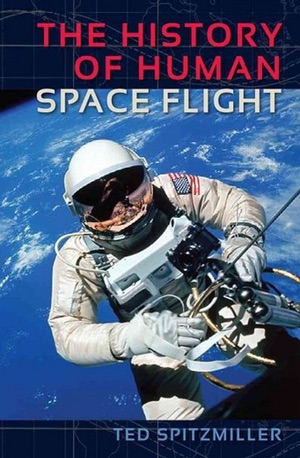Review: The History of Human Space Flightby Jeff Foust
|
| The era after the race to the Moon—far longer than the era from Gagarin though the Moon landings—ends up being curiously compressed. |
It certainly makes for an interesting chapter in the history of human spaceflight. But, in the new book The History of Human Space Flight by Ted Spitzmiller, that current chapter, and how we got to that point, doesn’t get much attention. While weighing in at more than 600 pages, this book focuses much more on the early history of human spaceflight, examining them in detail while offering far less about the post-Apollo history of humans in space.
Spitzmiller starts off with a detailed examination of activities leading up to humans in space, from high-altitude ballooning in the early 20th century to rocket-powered aircraft that sent humans ever faster and higher in mid-century. It’s not until page 180 that Yuri Gagarin lifts off on his historic human spaceflight. That’s followed by examinations of both the American and Soviet human spaceflight programs of the era, often recapped on a mission-by-mission basis. The emphasis throughout is on efforts to send people into space: only a few milestones not directly related to that history, like the launch of Sputnik, are mentioned.
That pace, as it turns out, could not be sustained through the entire book. The era after the race to the Moon—far longer than the era from Gagarin though the Moon landings—ends up being curiously compressed. Skylab, for example, gets a little more than six pages, in a chapter that also discusses the Salyut series of space stations. The shuttle program, the central human spaceflight program of the post-Apollo era, is discussed over the course of three chapters, but after about 60 pages Spitzmiller is done and moves on to discussions of Mir and the International Space Station, which itself gets a single 15-page chapter.
It’s not clear why the era after Apollo gets, relatively speaking, short shrift: a lack of interest by the author, or perhaps a lack of time in order to meet a publication deadline? Or, maybe, the realization that the giving modern programs more attention would have pushed out this already-large book to 1,000 pages or more—or, perhaps, made it a two-volume work.
| The epilogue offers only modest hope for the future, with a bit of hand-waving on the development of space colonies and a need not “to be constrained by our current understanding of the laws of physics.” |
The book is also a relatively straightforward account of that history, relying, based on its three-page bibliography, on biographies and historical accounts more than primary source research. (An exception is the discussion of the two shuttle accidents, which incorporates comments from former astronaut Sid Gutierrez, who also wrote the book’s foreword.) There’s much more discussion of the who, what, and when of that history than the why. Some key controversies are brushed aside, as well: Wernher von Braun’s membership in the Nazi party and the SS, the subject of far longer ethical discussions in other books, is dismissed as a “wartime expediency” in one paragraph here that also hails his “desire to avoid compromising his integrity.”
The book closes out with a very brief look at ongoing programs, with the Orion spacecraft getting three pages and the Space Launch System only one. China’s entire human spaceflight history also gets just a few pages at the end of the book. The epilogue offers only modest hope for the future, with a bit of hand-waving on the development of space colonies and a need not “to be constrained by our current understanding of the laws of physics.” An optimist might see all the ongoing progress, given just a cursory mention in the book, and see plenty of hope for the future without needing to change the laws of physics.
